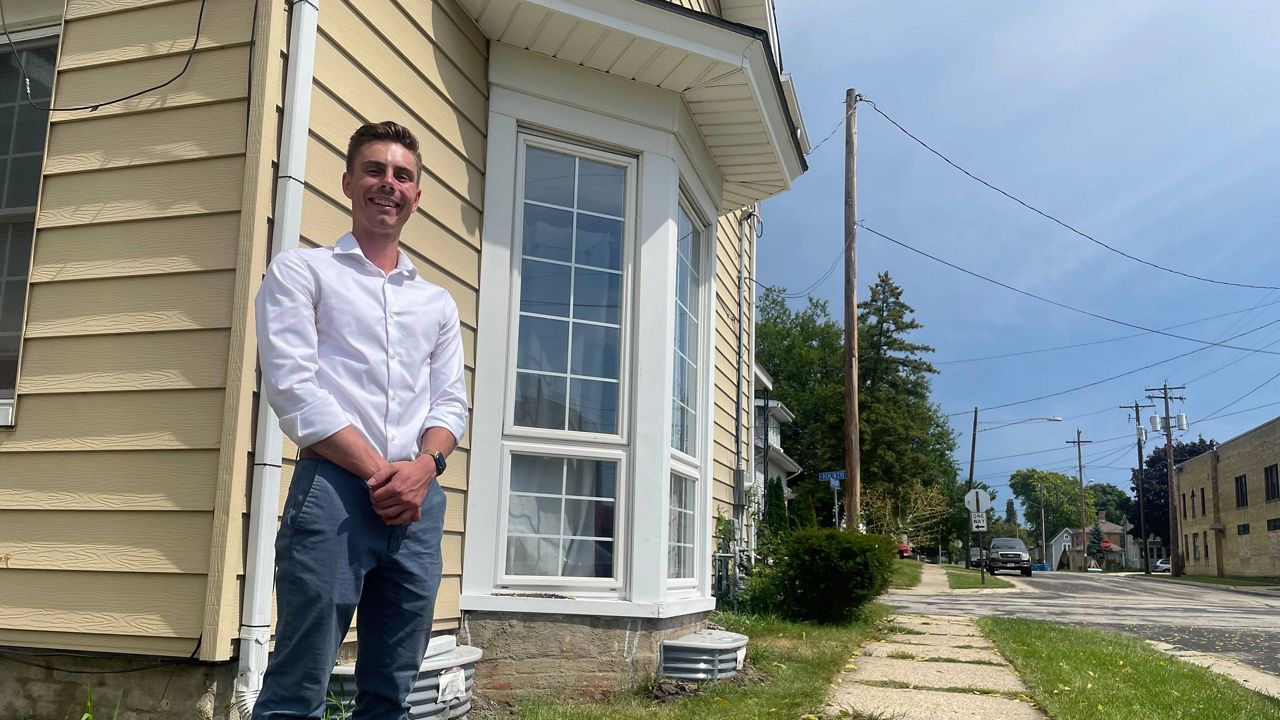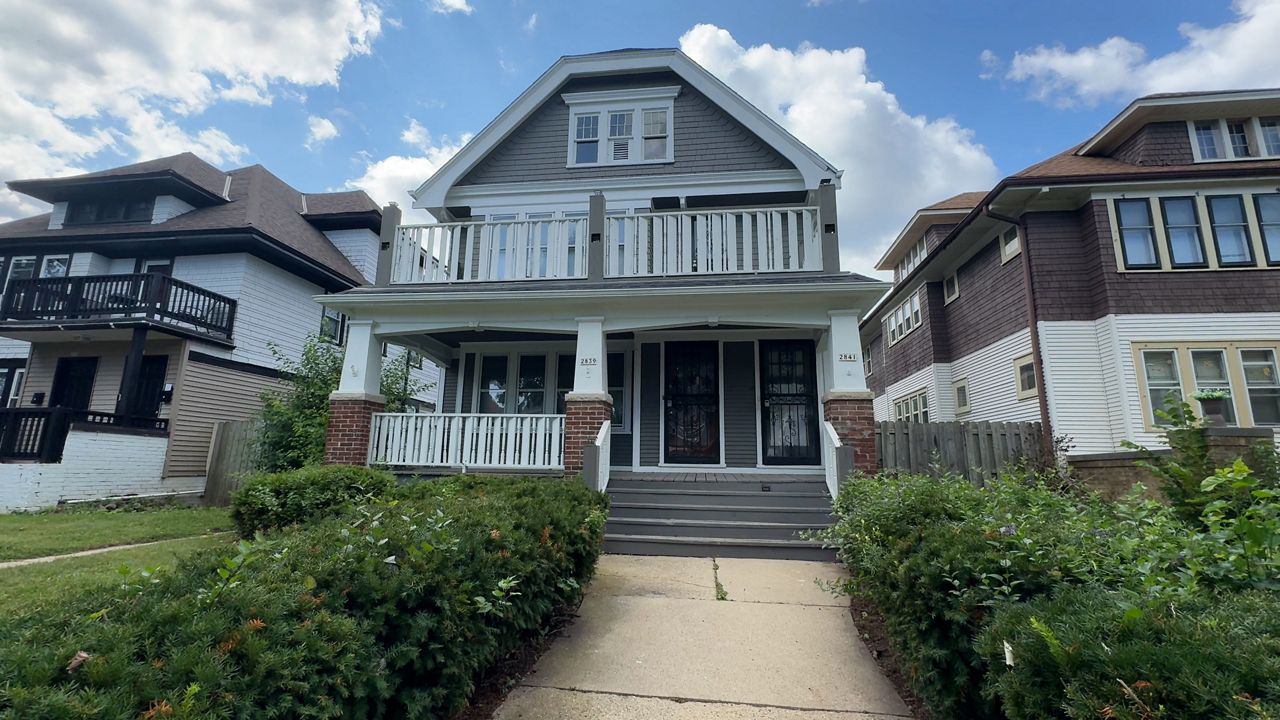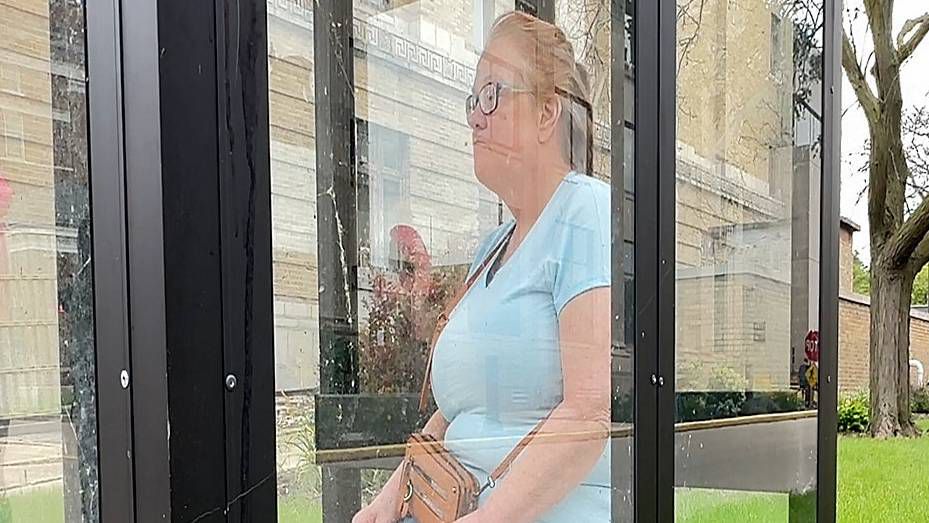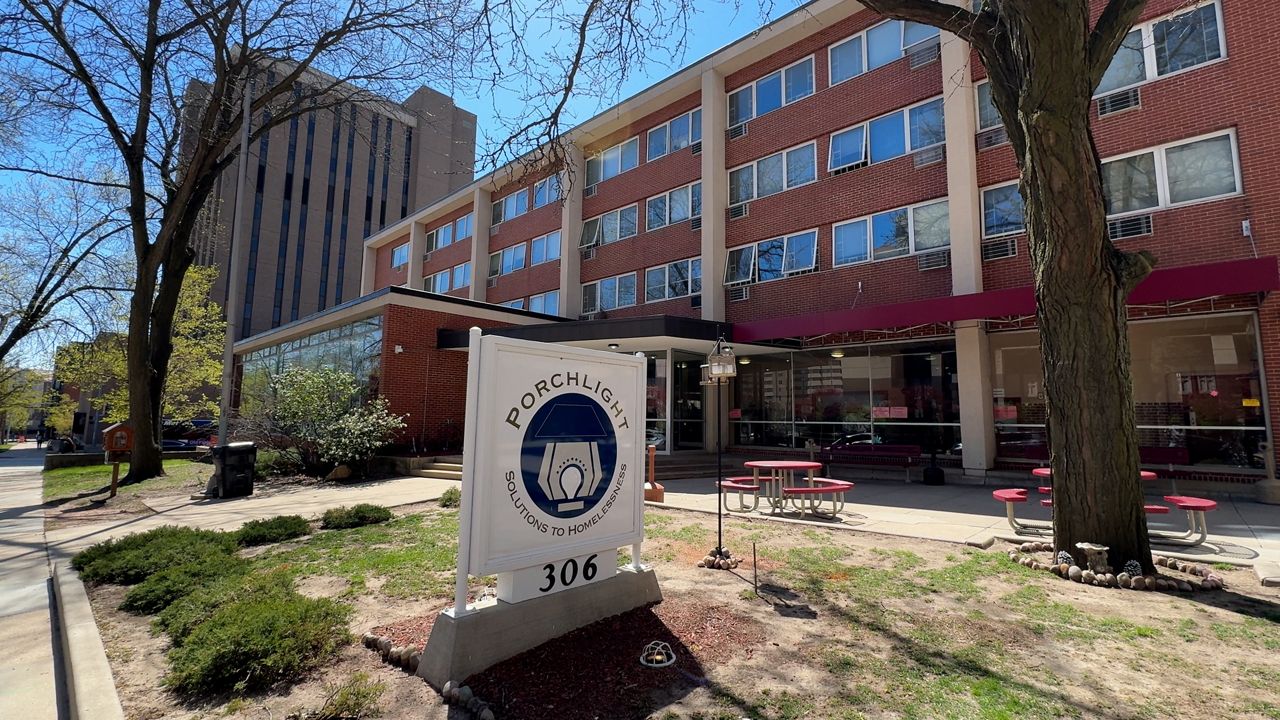MILWAUKEE — Katerina Klawes never expected she’d have to leave behind the house she had been renting for four years.
“It’s heartbreaking to take all these memories we have in this space, to box them up and to take them to a new place when really we love this place,” Klawes said. “We love this community. We know our neighbors, and we’re having to leave all that behind.”
Klawes and her partner were forced to leave their house on the east side of Milwaukee after new owners planned to raise rent by about $400.
“I couldn’t afford the extra what would likely be close to $400,” she said.
Klawes’ story isn’t unlike what many are experiencing in Milwaukee. Rents prices are becoming out of reach as demand forces rates upward, construction costs increase and prospective owners turn to renting.
The city of Milwaukee’s asking rent in April 2024 stood at $1,671, a 3.8% increase from the same time last year, according to Realtor.com.
Finding a new place wasn’t easy. Along the way, Klawes said she was getting beat out by other renters, being ghosted by landlords, finding that places weren’t as advertised and spending hundreds in application fees.
She said she and her partner toured about 20 apartments before they signed onto one that was just six blocks from their old rental.
“This move has been really hard on our family because this isn’t what we wanted,” she said.“This move has been really hard on our family because this isn’t what we wanted,” she said.
Klawes said she’d always imagined they’d stay in their rental until they could afford a house.
“It’s very difficult because first of all, I’m priced out right now of the buying market, which I have tried to buy before and been outbid — and now, I’m being priced out of the rental market,” she said.
Big rent increases
According to U.S. Census Bureau data estimates, the median rent in Milwaukee County in 2022 was approximately $1,012, up from $936 in 2021. Newer estimates show that number to be significantly higher.
Wisconsin Policy Forum senior researcher Joe Peterangelo said that’s because many of these newer estimates are looking at rental listings currently on the market rather than all occupied units.
Data released in April by Rent.com showed that of the 50 largest metro regions nationwide, Milwaukee had one of the biggest increases in rent. Realtor.com data for April 2024 showed rent in the metro area increased by 31.1% from pre-pandemic levels.
Renters across all income levels are feeling the strain — even if data doesn’t show the whole picture.
A recent Wisconsin Policy Forum study found that incomes actually kept pace with the rise in rents.
“From the first blush, it looks like renters are not as affected by this problem, which I think is surprising to me,” Peterangelo said.
He said some renters may have finances strong enough to purchase a home but are staying in the rental market because of a limited supply of houses for sale.
“So, we now have people like me, who are currently stuck in a cycle of being a renter who could afford to buy a house, but they can’t because there’s just physically a lack of housing stock,” Klawes said of her renting journey.
Peterangelo said people who can afford to buy that are staying in the rental market may be pushing up the average household income among renters, which was at $40,702 in 2022.
And renters, more than ever, are spending a higher percentage of that income on rent.
The share of Wisconsin renters who were spending at least 30% of their income on housing — which is the maximum percentage recommended by experts — has risen over the past several years, climbing from 43.6% in 2017 to 45.5% in 2022, according to Wisconsin Policy Forum.
That percentage is even higher in Milwaukee County, with Census estimates showing that 51% spent 30% or more on their rent in 2022. Klawes said had she stayed in her current rental, she would’ve been spending at least 50% of her income on rent, utilities excluded.
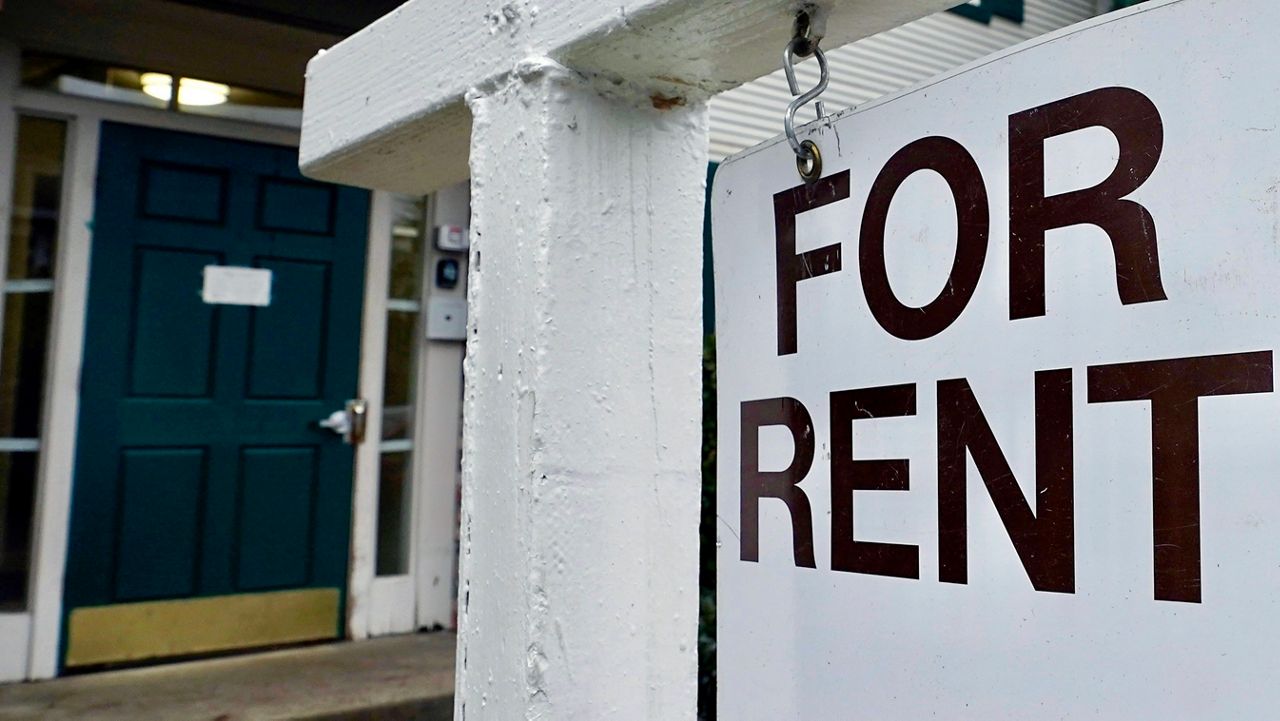
“That number has been creeping up across the country,” said Andy Hunt, director of the Vieth Center for Real Estate at Marquette University.
Community Advocates, one of several Milwaukee groups providing financial and landlord help for renters, said it’s been experiencing more people coming to the organization with affordability issues.
Maudwella Kirkendoll, chief operating officer of Community Advocates, said the organization can only help so many people because the U.S. Department of Housing and Urban Development hasn’t caught up with rising rental costs.
He said they often have a lot of people coming to them with rents exceeding the “fair market rents,” which means they can’t do anything to help. Meeting that fair market rent rate — the estimate created by HUD for how much rent should cost for a unit given the market, its location and more — is a requirement for renters seeking rental assistance help through the organization. In Milwaukee, the 2024 fair market rent is $979 for a one-bedroom apartment.
“We don’t have the funding source that’s ever paid for something as simple as I just can’t afford my rent,” Kirkendoll said.
Competition heating up
Not only are costs rising, but so is the competitiveness in the market.
Milwaukee was ranked as the second most competitive rental market in March 2024 by RentCafe.
Milwaukee renter Klawes said the landlord of the apartment she and her partner ended up renting told them the unit had more than 100 applicants. She said there just isn’t enough housing in Milwaukee to meet the need.
“I do all the things that you’re supposed to do and still, I had to look at over 20 apartments to find the next place to live and I was looking right up until the deadline.”“I have a near perfect credit score. I’ve never been evicted,” she said. “I do all the things that you’re supposed to do and still, I had to look at over 20 apartments to find the next place to live and I was looking right up until the deadline.”
Experts say part of the competition has to do with the three generations that are now competing for the same rentals: Boomers, Millennials and Gen Z.
Hunt said Gen Z are fresh out of college looking for places to live; Millennials are getting stuck in rentals as they push off buy decisions; and Boomers are retiring and moving downtown.
“Those three groups, the Boomers, the Millennials and now Gen Z, are all competing for the same apartments and it’s only gotten worse because of that affordability and interest rates going up,” he said.
Vacancy rate in the county shows a clearer picture of just how competitive it is.
Milwaukee County’s rental vacancy rate remains one of the lowest in the country, with an estimated 5.8% vacancy rate in 2022. This rate hasn’t wavered much over the years.
In the beginning of 2024, the Milwaukee metro area saw a rental vacancy rate of lower than 4%, according to commercial real estate investment sales brokerage Marcus & Millichap. Comparably, the national rental vacancy rate in the first quarter of 2024 was 6.6%.
Hunt said this is another factor for why rental costs have continued to go up.
“Because that vacancy rate is low, landlords are incentivized to push the rental costs,” he said. “When it’s higher vacancy, when you have more availability, you don’t really push your rents much because you’re really trying to attract people to your buildings.”
Hunt said demand might be reaching a tipping point, where the amount of new construction will surpass it, but he said that doesn’t mean costs will go down.
Much of the new construction that has been prioritized favors those with higher income, experts say.
Hunt said that’s because developers will build what they know they can get a return on given how expensive it is to build in the current market.
Data compiled by the Joint Center for Housing Studies of Harvard University shows this trend, with low-rent supply shrinking in the state and high-rent supply going up.
Peterangelo said he’s noticed the state is either getting luxury or subsidized housing, where federal tax credits can help developers build affordable housing for low-income renters. He said it leaves a considerable gap.
“A lot of a people don’t qualify for that low-income housing and there’s this gap… nothing is being built in the middle and it’s very difficult to make the financing work on those projects,” he said.
In 2020, there was a 40,000 gap in affordable housing in Milwaukee, with just over 30,000 units affordable rental units for 70,000 low-income families, according to Milwaukee County housing data.
Much of the new construction also doesn’t focus on one-bedrooms, which are proving to be in high demand as single-person households climb.
“That is by far the most in-demand unit type and yet we’re not building nearly enough of those,” Hunt said.
Experts said it may be time to re-examine what “affordability” means in the current market.
Hunt said it’s often associated with low-income but that the definition is changing.
“I think that that is gone. This is now an all-income issue where affordability is really challenging,” he said.
Hunt also said given that the issue is wide-ranging, the government may have to step in.
One possible solution
In Milwaukee, the city is doing just that. Growing MKE is a group working to make changes to the zoning code, which could allow for more affordable developments. The zoning code hasn’t been updated since 2002 and has “limited some housing diversity,” according to the plan.
“Zoning sets the rules for what can be developed on a parcel of land. It says how many homes can be developed on an individual lot, the number of parking spaces that are required to be provided, the height and size of a building,” said Sam Leichtling, city planning director for the City of Milwaukee.
He said while Milwaukee already has a zoning code that’s more lenient than some of its peers, there are still some restrictions. The changes will allow for a wider variety of housing with some lower price points.
At its current stage, the plan is open to feedback, but makes several suggestions, including allowing what the plan calls more “missing middle” housing — townhomes, triplexes and fourplexes — to be built in residential districts. The group will present a revised plan to the Common Council this summer.
Leichtling acknowledged that the zoning code is just one part of the solution. Changes are expected to go into effect in 2025.
“It’s not a solution to rising housing costs, but it’s one piece of a larger puzzle,” he said.
He said the rising costs have made it crucial for entities to work together and be aligned on broader strategies to address the issue.
For now, Klawes said tenants will continue in the current climate to go through a revolving door to stay afloat in the rental market, never totally settling down.
“And I think that that’s the real danger of what’s happening with our rental housing market and our housing market. It’s literally destroying the fabric of our communities,” she said.







